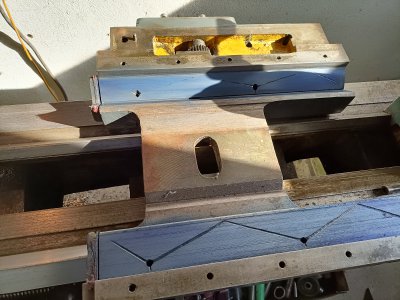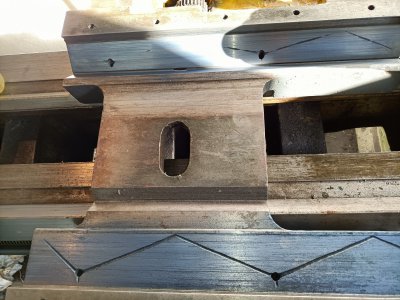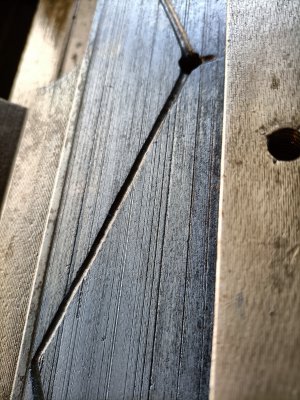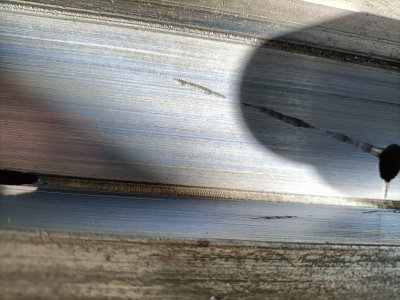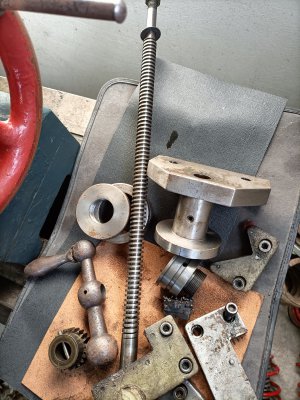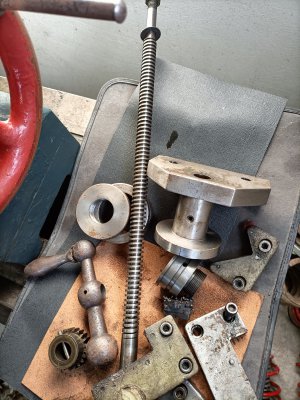- Joined
- Feb 1, 2018
- Messages
- 1,868
He is correct, if you set the tool at the centerline your cross-slide traveling in on an angle in and out will not matter. Think about a slant bed lathe it comes in and still works. Or a cut off tool on a screw machine. as long as the tool is set to the centerline at the end of the cut. We try to keep the saddle co-planer to the bed - front or head-stock end to tail-stock end by measuring the underside of the saddle where the carriage bolts on so the feed shaft and feed screw / half nut are aligned to the right height. As I explained by shimming the saddle up and using the rack pinion and rack clearance and measuring down from the top of the saddle flats above the dovetail with either a level on them and the bed or indicating the tops and moving the saddle front to back and indicating those clearance surfaces. Machine rebuilding is not rocket science. If you have common sense and take your time and ask people who have down it before it's simple. Now with you tube and being able to post photo's from experts online. You will be able to solve this problem. Where the issue lies is trying some new way and experimenting or listening to someone guessing at how to do it. That is where you will get yourself in a mess. Thanks VT for moving this into the rebuild section and as you said VT, many should learn from this thread as we help the OP.


